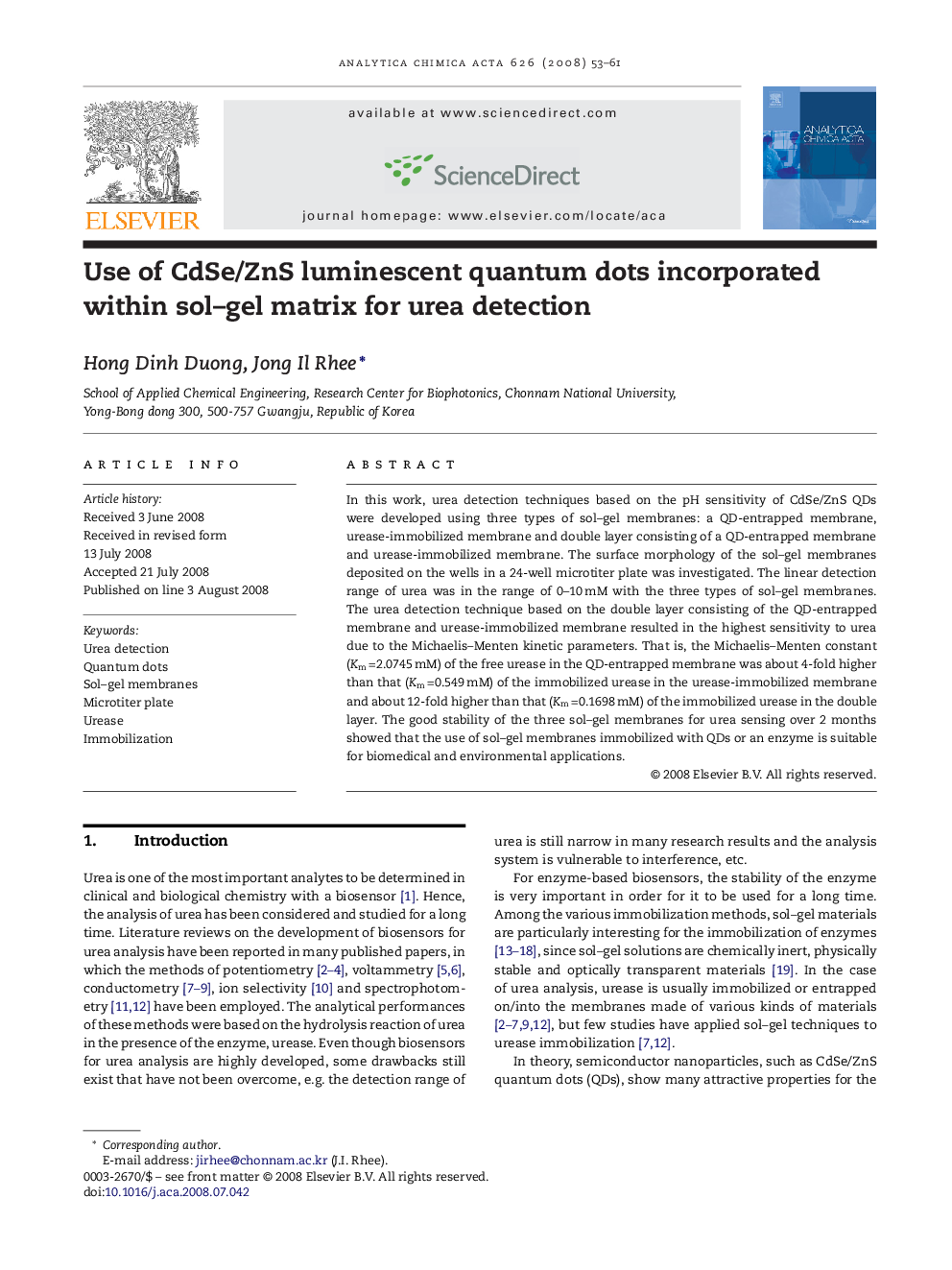| Article ID | Journal | Published Year | Pages | File Type |
|---|---|---|---|---|
| 1169226 | Analytica Chimica Acta | 2008 | 9 Pages |
In this work, urea detection techniques based on the pH sensitivity of CdSe/ZnS QDs were developed using three types of sol–gel membranes: a QD-entrapped membrane, urease-immobilized membrane and double layer consisting of a QD-entrapped membrane and urease-immobilized membrane. The surface morphology of the sol–gel membranes deposited on the wells in a 24-well microtiter plate was investigated. The linear detection range of urea was in the range of 0–10 mM with the three types of sol–gel membranes. The urea detection technique based on the double layer consisting of the QD-entrapped membrane and urease-immobilized membrane resulted in the highest sensitivity to urea due to the Michaelis–Menten kinetic parameters. That is, the Michaelis–Menten constant (Km =2.0745 mM) of the free urease in the QD-entrapped membrane was about 4-fold higher than that (Km =0.549 mM) of the immobilized urease in the urease-immobilized membrane and about 12-fold higher than that (Km =0.1698 mM) of the immobilized urease in the double layer. The good stability of the three sol–gel membranes for urea sensing over 2 months showed that the use of sol–gel membranes immobilized with QDs or an enzyme is suitable for biomedical and environmental applications.
